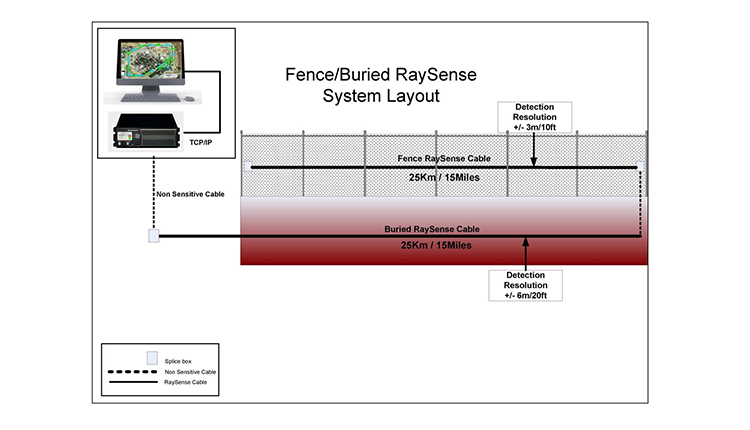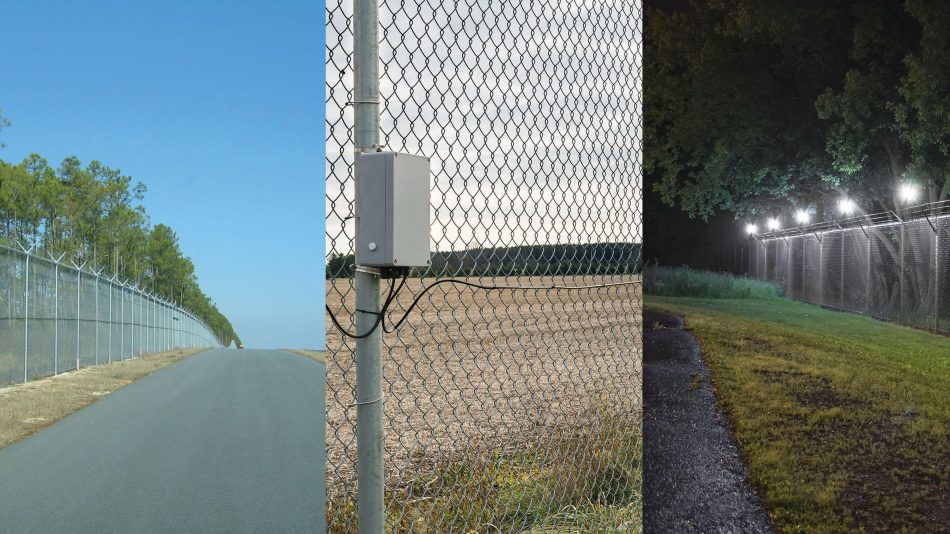Key Features of Fiber Optics Infrastructure for Security Installations You Need to Know
Improve Your Security With Advanced Fiber Optic Protection Solutions
In an age where safety is paramount, sophisticated fiber optic safety systems provide an engaging service for improving security throughout various environments. These systems not just boast remarkable transmission capacity and rate for high-resolution surveillance however also offer exceptional strength versus outside interferences. As companies progressively look for dependable methods to secure their assets, the combination of innovative modern technologies like AI and IoT within fiber optic structures elevates vital questions regarding their efficiency contrasted to standard systems. What effects do these innovations hold for future safety steps?
Advantages of Fiber Optic Protection
Taking advantage of the benefits of fiber optic modern technology substantially improves safety systems across numerous applications. Among the key benefits is the boosted data transfer capacity, enabling for the transmission of huge quantities of data at high speeds. This is particularly crucial for real-time video clip surveillance, where high-resolution feeds can be sent out without latency, ensuring prompt feedback capacities.
Additionally, optical fiber display exceptional resistance to electro-magnetic interference, which is essential in atmospheres with potential signal disruptions. This integrity ensures constant performance in essential safety and security procedures. In addition, fiber optic wires are less vulnerable to tapping and unauthorized access compared to typical copper circuitry, therefore enhancing data integrity and discretion.
One more remarkable advantage is the durability of fiber optic systems; they are much more resistant to environmental aspects such as moisture, temperature fluctuations, and destructive materials. This strength converts to lower maintenance expenses and longer life expectancies for security setups.
Finally, the lightweight nature of fiber optic cables assists in less complicated installation and transmitting, particularly in complicated facilities (fiber optic security system). Ultimately, the assimilation of fiber optic technology into safety and security systems not just reinforces security procedures however likewise maximizes functional efficiency
Trick Attributes to Consider
When assessing fiber optic security systems, several essential features should be taken into consideration to ensure optimum performance and performance. First, evaluate the system's discovery variety and sensitivity; a substantial range permits monitoring large locations, while high level of sensitivity ensures that even small disturbances are detected promptly.
Following, take into consideration the combination capabilities of the system. A fiber optic safety and security system ought to flawlessly interface with existing protection steps such as video cameras and alarms, developing a natural safety and security network.
Durability and environmental resistance are likewise crucial features. Make sure that the system is developed to withstand extreme weather and prospective physical hazards, as this will prolong its functional life-span.

Last but not least, consider the scalability of the system. A robust fiber optic safety system ought to be conveniently expanding to accommodate future demands without considerable overhauls. By very carefully taking into consideration these features, you can pick a fiber optic safety and security option that boosts safety and protection in your environment.
Setup Process Review
To effectively apply a fiber optic safety system, a methodical installation process is vital. This process starts with an extensive website assessment to figure out the specific protection demands and to recognize optimal places for fiber optic cords and safety tools. Following this assessment, the installation group will create a detailed plan, consisting of cord paths, necessary devices, and compliance with neighborhood regulations.
Next, the installment includes laying the fiber optic wires, ensuring they are protected from ecological elements and physical damages. Correct handling methods are important, as fiber optic wires are delicate and can be conveniently damaged. After the cabling is mounted, adapters and terminations are carefully completed to make certain signal honesty.
The succeeding stage contains mounting safety tools such as cams, movement detectors, and security system, all incorporated with the fiber optic network. Extensive testing is performed to validate that all components are operating properly and to guarantee ideal efficiency.

Comparing Fiber Optic to Conventional Solutions
The advancement of protection modern technology has blog here brought about significant find more info advancements in the contrast in between fiber optic systems and conventional copper-based systems. Fiber optic systems use light to transfer data, providing premium data transfer and rate contrasted to their copper counterparts. This results in improved data transmission capacities, making fiber optics optimal for high-resolution video surveillance and real-time surveillance.
Furthermore, fiber optic wires are resistant to electromagnetic interference, minimizing the chance of signal deterioration caused by exterior variables. This particular makes sure consistent performance, also in tough environments. In comparison, conventional copper systems are a lot more at risk to interference, bring about possible susceptabilities in security applications.
Durability is another benefit of fiber optic systems. They are less susceptible to harm from environmental factors such as moisture and temperature changes, which can endanger copper wiring. Fiber optics are lighter and thinner, allowing for much easier setup and reduced physical footprint.
Nonetheless, traditional systems often tend to have reduced first costs, making them attractive for budget-conscious projects. While fiber optic systems might call for a greater upfront investment, their long-term benefits-- such as lower maintenance costs and better reliability-- usually exceed the preliminary expenditure, positioning them as an exceptional option for modern safety and security requirements.
Future Patterns in Safety Innovation
Emerging patterns in safety technology are positioned to change the landscape of surveillance and hazard discovery - fiber optic security system. As companies progressively deal with sophisticated dangers, technologies such as expert system (AI) and equipment knowing (ML) are ending up being essential to safety and security systems. These modern technologies enhance the capability of fiber optic systems by enabling real-time information analysis, identifying anomalies, and automating feedbacks to possible breaches
Furthermore, the combination of the Internet of Points (IoT) is reinventing security structures. IoT gadgets can offer comprehensive situational understanding and facilitate smooth communication in between various safety elements. This interconnectedness allows for a lot more reliable surveillance and faster event response times.
Biometric verification Extra resources is additionally gaining energy, supplying a greater degree of safety and security through unique physical characteristics. As this technology advances, it is likely to be integrated into fiber optic systems for boosted access control.
Conclusion
In conclusion, advanced fiber optic security systems represent a considerable advancement in safety and security and surveillance technology. The change from typical systems to fiber optic services reflects a growing trend towards a lot more efficient and effective safety and security steps in a progressively complex technological landscape.